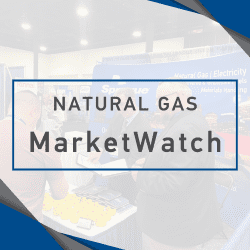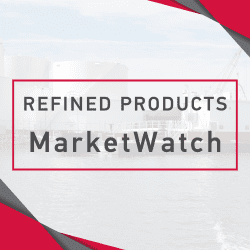Recap: Oil futures shaved early losses on Monday, gaining on weakness in the U.S. dollar index, which fell to its lowest level in two years. However, gains were limited by the continued spread of COVID-19 and its impact on demand, as well as tensions between the U.S. and China. A weaker dollar can be supportive for commodities as it makes them less expensive to users of other currencies. WTI for September delivery tacked on 31 cents, or nearly 0.8%, to settle at $41.60 a barrel, after trading as low as $40.48. September Brent edged up by 7 cents, or 0.2%, to $43.41 a barrel. August RBOB shed 0.8% to $1.2747 a gallon and August heating oil inched 0.2% lower to $1.2541 a gallon.
Technical Analysis: WTI remains within the sideways trading pattern it has formed while trading in an uptrend. A break above the 200-day moving average, currently set at $42.51 will signal a break of the sideways trading pattern and will lead to a continuation of the up move. Above this level, additional resistance is set at $46.19. To the downside, support is set at $40.58 and below that at $39.95.
Fundamental News: IIR Energy reported that U.S. oil refiners are expected to shut in 3.7 million bpd of capacity in the week ending July 31st, increasing available refining capacity by 39,000 bpd from the previous week. Offline capacity is expected to increase to 3.8 million bpd in the week ending August 7th.
The U.S. Environmental Protection Agency's Office of Inspector General said it will evaluate the agency's rollback of Obama-era vehicle emissions requirements. In May, Senator Tom Carper, a Democrat, asked the inspector general's office to investigate whether EPA officials improperly circumvented the Clean Air Act, regulatory and other procedural requirements, citing documents obtained by Carper's office.
Goldman Sachs forecast year-end 2020 global oil demand at 96.3 million bpd, down about 6 million bpd relative to its pre-COVID 19 expectations. It said it further assumes a persistent loss in corporate travel and sees end of 2021 jet fuel demand still 700,000 bpd below the end of 2019 level.
According the General Administration of Customs, China, the world's biggest crude oil importer, imported a record 53.18 million tons in June. China’s crude oil imports from Saudi Arabia in June increased 15% on the year, as refiners ordered record volumes of the fuel in March and April when oil prices fell, cementing the kingdom's position as the top oil supplier to China. Imports from Saudi Arabia increased to 8.88 million tons in June, or 2.16 million bpd, in June. Shipments from Russia totaled 7.98 million tons last month, or 1.95 million bpd, up around 7% from 1.82 million bpd in May and 1.73 million bpd in June 2019.
The U.S. Commerce Department reported that orders for non-defense capital goods excluding aircraft, a closely watched proxy for business spending plans, increased 3.3% in June. These so-called core capital goods orders increased 1.6% in May and remained below their pre-pandemic level. Core capital goods orders fell 2.3% on a year-on-year basis in June. Shipments of core capital goods increased 3.4% last month. Core capital goods shipments rose 1.6% in May. Orders for durable goods increased 7.3% in June after rebounding 15.1% in May.
Early Market Call – as of 8:25 AM EDT
WTI – Sep $41.46, down 14 cents
RBOB – Aug $1.2744, down 3 points
HO – Aug $1.2747, down 67 points
View the Sprague Refined Products Market Watch Report in a downloadable pdf format by clicking below.
Click to view more online:
Heating Oil Supplier
Diesel Supplier
View market updates
View our refined products glossary
Go to SpraguePORT online










